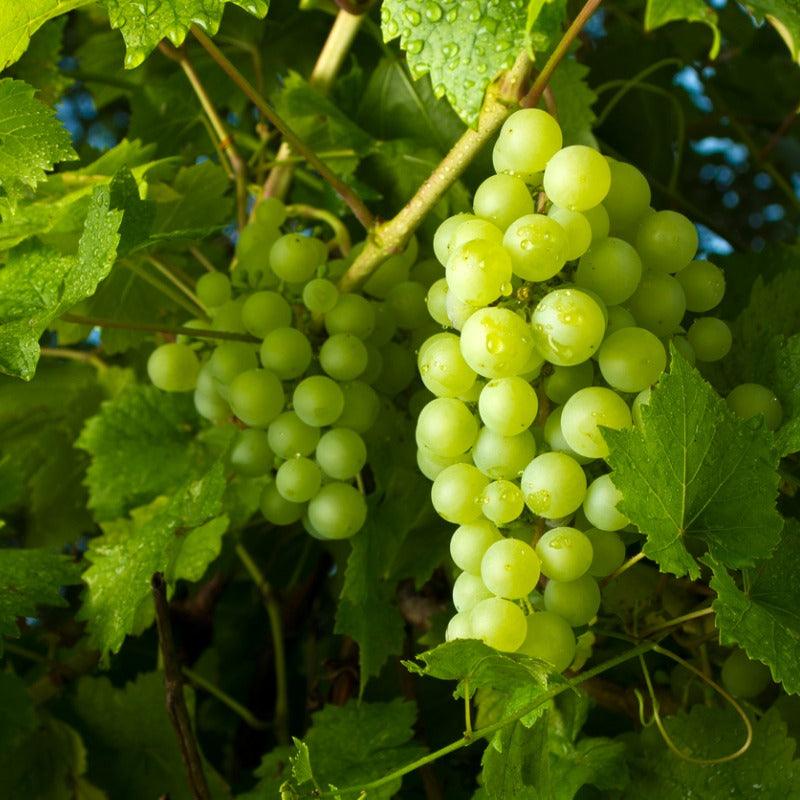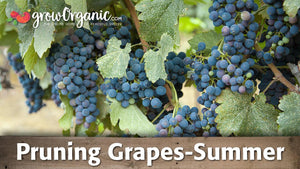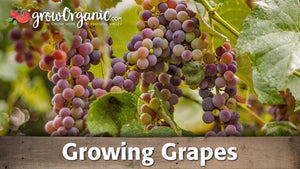Item Number: FV011
Princess Seedless Table Grape Vine
Sweet, firm grapes with floral notes.
Mix-and-match for free shipping when purchasing 6 or more perennial berries, vines, or crowns!
Princess Seedless grapes are a unique variety producing large, firm green grapes with a sweet flavor and delicate floral notes. These late-season grapes are ideal for fresh eating, fruit platters, and snacking. The vines thrive in full sun and well-draining soil, delivering high yields of high-quality fruit. With their exceptional flavor, crisp texture, and attractive appearance, Princess Seedless grapes are a delightful addition to home gardens and vineyards.
- Bare Root Vine
- Variety: American
- Zones: 6-10
- Pruning: Cane Prune
- Harvest: September - October
- Fruit: Light Green Shiny thick skin, seedless, translucent flesh
- Facts of note: Crisp, juicy texture, and mild, sweet flavor. This makes them a favorite for snacking, adding to salads, or incorporating into various recipes
Princess Seedless Table Grapes are a popular variety of table grapes known for their light green, shiny skin, translucent flesh, and delightful flavor. These American grapes are prized for their crisp, juicy texture and mild, sweet taste, making them a favorite for snacking, adding to fruit salads, and incorporating into a variety of recipes. Growing Princess Seedless grapes offers a rewarding experience for gardeners and viticulturists alike, as they provide abundant fruit production when properly cared for.
Growing Grapes: Princess Seedless Grape Vine
Princess Seedless grapes thrive in USDA hardiness zones 6-10, making them suitable for a wide range of climates. This variety performs best in areas with warm summers and a relatively long growing season, as the grapes need time to ripen fully and develop their characteristic sweetness. Princess Seedless grapes are particularly well-suited to regions with hot days and cooler nights, which enhance the flavor of the fruit.
When selecting a location to plant your Princess Seedless vines, it’s important to choose a site that receives full sunlight for at least six to eight hours each day. Grapevines require plenty of sunlight to ensure proper growth and fruit development. A south-facing slope or an area that is well-exposed to sunlight will maximize fruit production. Additionally, good air circulation is important to prevent diseases, so avoid planting the vines in areas where air movement is restricted, such as against a building or in a low-lying area.
These vines prefer well-drained, loamy or sandy loam soils. The soil should be fertile enough to support vigorous growth while providing the drainage needed to prevent waterlogging, which can lead to root diseases. If your soil is heavy or poorly drained, consider amending it with organic matter such as compost to improve its structure.
Grape Pruning for Princess Seedless
Pruning is essential for successful grape production, and Princess Seedless vines require cane pruning for optimal growth and fruit yield. Cane pruning involves selecting healthy, mature canes from the previous year’s growth and cutting them back to about 8-15 buds. This method encourages the development of new fruiting canes while preventing overcrowding, which can hinder fruit quality.
Prune the vines during the dormant season, typically in late winter or early spring, before new growth begins. When pruning, remove any old, damaged, or unproductive wood, leaving only the most vigorous canes. Cane pruning allows for better air circulation, which helps reduce the risk of fungal diseases and ensures that the plant’s energy is directed toward fruit production rather than excessive vegetative growth.
In addition to annual pruning, proper trellising is important for supporting the vines and encouraging the best possible fruit set. A well-designed trellis system helps guide the vines as they grow, providing structure and support for the developing grape clusters. Whether using a single wire or a multi-wire trellis, ensure the vines are trained to grow along the wires for easy maintenance and harvesting.
Watering and Fertilizing Princess Seedless Grapes
Consistent watering is key to growing healthy Princess Seedless grapevines. While established grapevines can tolerate periods of drought, they still require regular watering, especially during the growing season. Water deeply and infrequently, aiming to keep the soil evenly moist but not waterlogged. Drip irrigation systems are ideal for grapevines, as they deliver water directly to the root zone while minimizing water waste and reducing the risk of fungal diseases that can occur when foliage is wet.
During the growing season, especially in hot weather, be sure to monitor the vines for signs of water stress, such as wilting leaves or shriveled grapes. Proper watering is particularly important during fruit set and as the grapes begin to ripen.
Fertilizing your Princess Seedless grapevines is another essential step for maximizing fruit production. Grapevines generally do well with a balanced fertilizer that provides essential nutrients, including nitrogen, phosphorus, and potassium. Applying a slow-release organic fertilizer in early spring can provide the necessary nutrients for healthy vine growth and fruit development. Avoid over-fertilizing, as excessive nitrogen can lead to excessive vegetative growth at the expense of fruit production.
Managing Pests and Diseases
Like all grape varieties, Princess Seedless grapevines are susceptible to certain pests and diseases. Common pests include grape leafhoppers, spider mites, and aphids, which can damage the leaves and reduce the plant’s vigor. Insecticidal soaps or horticultural oils can help control these pests, though natural predators like ladybugs can also be effective in keeping populations in check.
Fungal diseases such as powdery mildew, downy mildew, and botrytis bunch rot can also affect Princess Seedless grapes, particularly in humid or wet conditions. Powdery mildew appears as a white, powdery coating on leaves and fruit, while downy mildew causes yellowish or brown spots on the leaves. Botrytis bunch rot affects the grape clusters, leading to shriveled or rotting fruit. To prevent these diseases, ensure proper air circulation around the vines and avoid overhead watering. Regular applications of fungicides or organic sulfur-based sprays can help control fungal outbreaks.
Harvesting Grapes: Princess Seedless
The harvest period for Princess Seedless grapes typically falls between September and October, depending on the climate and growing conditions. The grapes should be harvested when they reach full ripeness, characterized by their light green, shiny skin and translucent flesh. As the name suggests, Princess Seedless grapes are seedless, making them ideal for snacking and other culinary uses.
To determine when the grapes are ready for harvest, taste a few from different clusters. They should be sweet and juicy, with a crisp texture. The grapes will not continue to ripen once picked, so it’s important to harvest them at the right time.
When harvesting, use clean, sharp pruning shears to cut the clusters from the vine. Handle the grapes carefully to avoid bruising or damaging the fruit, as this can reduce their quality and shelf life. Once harvested, Princess Seedless grapes can be stored in the refrigerator for several days, though they are best enjoyed fresh.
Uses of Princess Seedless Grapes
Princess Seedless grapes are primarily grown as table grapes, valued for their crisp texture and sweet flavor. Their mild, juicy taste makes them a popular choice for snacking, but they are also versatile enough to be used in a variety of recipes. Whether added to fruit salads, incorporated into desserts, or used as a topping for yogurt or cereals, these grapes bring a refreshing, sweet element to any dish.
While Princess Seedless grapes are not typically used for wine production, their high quality as table grapes makes them a sought-after variety for home gardens and commercial growers alike. Their light green color and shiny appearance make them an attractive addition to fruit platters, and their seedless nature makes them easy to enjoy without the hassle of removing seeds.
Conclusion
Growing Princess Seedless grapes offers the opportunity to enjoy high-quality table grapes with a delightful flavor and texture. With proper care, including careful pruning, regular watering, and pest management, these vines will produce abundant fruit that is perfect for fresh eating and culinary use. Whether you’re a backyard gardener or a commercial grower, the Princess Seedless grape is a versatile and rewarding variety to cultivate, offering sweet, juicy grapes that are a favorite for snacking and more.
Visit our Berry, Vine & Crowns Characteristics Chart to compare growing characteristics for all our berries, vines, and crowns.




Check Your Zone Compatibility:
Compatible with your zone.
Growing Zone for

Our Guarantee To You
Since 1976, we've served our customers at every stage of growing. Please contact us at any time. We are happy to support and assist you.
Shipping Information
Shipping Information
Cannot ship to the following states: HI , AK , PR , GU , VI , OR , WA , ID
Cannot ship via USPS.
Cannot ship via SmartPost.
Shipping Weight: 3.3 lb
Dimensions: 36.0"L x 4.0"W x 4.0"H
Features
Features
Characteristics
Characteristics
Planting & Care
Planting & Care
Useful Information
Useful Information
Guarantee
Guarantee
Limited Dormant Tree & Plant Guarantee
* Claim deadline is June 15th
We guarantee that your dormant tree or plant will arrive in good, viable condition. If your tree arrives in substandard condition, notify us within 3 days of delivery. Please email pictures of the box, inside packaging, the tree and its roots to helpdesk@groworganic.com. We will investigate your claim and process a request to exchange or refund the damaged product.
If your dormant tree or plant has not grown new leaves by June 15th, you may be eligible for our Limited Dormant Tree & Plant Guarantee. This guarantee provides for a store credit for the purchase price of the tree, excluding shipping. Please see the Instructions below.
Important Dates:
- April 1st Dormant trees/plants must be planted in the ground
- May 15th Perform scratch test, if no new leaves have grown
- June 15th Deadline to apply for a dormant tree/plant credit
All required documentation must be received by June 15th for your claim to be considered. Claims or documentation received after June 15th will be denied, without exception. Instructions listed below
Terms and Conditions
We cannot guarantee that your tree or plant will remain alive and healthy after it is received, or bear fruit as there are too many variables in your environment that are beyond our control (i.e. soil preparation, weed and pest control, proper irrigation, chill hours, compatible hardiness for your growing zone, proper choice of pollinator, extreme weather, rodent damage, disease, etc.).
We cannot guarantee that we will be able to provide a replacement tree/plant of the same species either that same growing season or in future years. Customers are responsible for all shipping fees associated with replacement trees and plants.
If we determine that the tree you purchased directly from us is not viable, we will issue you a store credit (not a refund) for the purchase price of the affected dormant tree or plant. Shipping is not included in the dormant tree/plant guarantee. Store credits can be used to purchase any product we sell and are valid for use only until July 1st of the following year.
Historically, 98% of our dormant trees and plants grow and thrive when they have been cared for and planted using our growing guides. Dormant trees and plants must be planted in the ground by April 1st in order to be eligible for credit. If the ground in your area is still frozen solid, you may temporarily plant your tree or plant in a pot.
Potted, non-dormant trees or plants are excluded from this guarantee as they are not dormant at the time of shipment. Evergreen trees such as citrus, avocado and olive trees are not available for credit under the Dormant Tree and Plant Guarantee.
Instructions
We guarantee that your dormant fruit tree or plant will leaf out, if you care for it according to our growing guides. In the unlikely event that your dormant tree or plant does not have leaves by May 15th, follow these simple steps to apply for a store credit:
Before you call or email, please perform a “scratch test” to determine if the tree or plant is still alive. This video shows how to check for live tissue under the bark. Scratch tests need to be done a few inches above and below the graft.
Green Cambium Layer / Living Trees
If the cambium layer under the bark is green, give your tree a little more time. It is still alive, but hasn’t come out of dormancy yet. Check to make sure that it is getting the right amount of deep root water, enough sunlight and that the weather is warm enough for that type of tree/plant to come out of dormancy. Every tree has its own personality and will come out of dormancy at different times. Be sure to submit the required documentation listed below by June 15th, if it doesn’t grow leaves.
Brown Cambium Layer / Dead Trees
If the scratch test shows a brown cambium layer or if your dormant tree/plant doesn’t have leaves by June 1st, please email us at helpdesk@groworganic.com. All required documentation listed below must be received by June 15th for your claim to be considered. To be considered for the guarantee claim, all required documentation must be received by June 15th. Incomplete submissions will be denied.
Required Documentation
- Order number
- Name of dormant tree/plant and the quantity affected
- Photos of each tree or plant showing:
- The roots (tree or plant must be pulled out of the ground)
- The scratch test areas
- The entire tree/plant
We reserve the right to not issue credit for items that have already been replaced. We also reserve the right to require photographic evidence that the tree/plant was not killed by root rot, rodent or mechanical damage.
Share

Videos
Articles
-
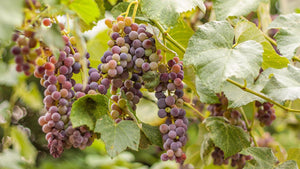 Sun, Jan 07, 2024
Sun, Jan 07, 2024Planting & Growing Grapes
-
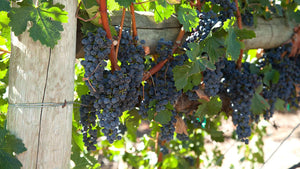 Wed, Mar 12, 2025
Wed, Mar 12, 2025When to Plant Grapes: A Complete Guide to Planting Grapes in Clay Soil and Beyond
-
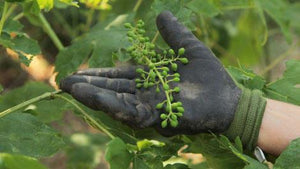 Thu, Jul 03, 2025
Thu, Jul 03, 2025Trim Grapes in Summer With Confidence: Learn How to Trim Grape Vines in Summer and the Secrets to Pruning Grape Vines During Growing Season
-
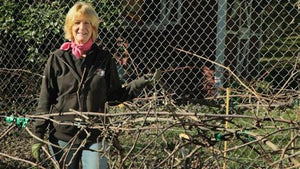 Thu, Feb 06, 2025
Thu, Feb 06, 2025Planting & Pruning Grape Vines

